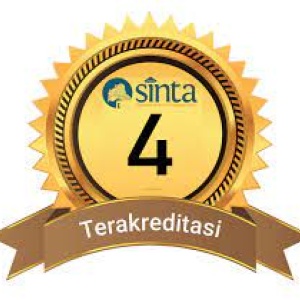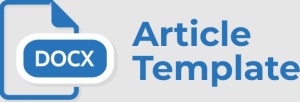Surat Bupati Cianjur Untuk Raffles (1816): Naskah Melayu Pertama yang Ditulis Menggunakan Aksara Latin
DOI:
https://doi.org/10.37014/jumantara.v11i1.679Keywords:
Manuscript, Letter, Malay, Roman Script, Regent of Cianjur, RafflesAbstract
In this article, I discuss a letter from the first Raden Aria Adipati Prawiradireja (regent of Cianjur period 1813-1833) for Thomas Stamford Raffles. The letter, written on 11 Jumadilawal 1231 Hegira (April 9th, 1816), contain farewell speech to Raffles who have just finished his six-years service as Lieutenant-Governor Java and It's Dependencies. This letter is a British Library collection and it had been put in a "bundle" coded Add Ms 45273. The letter interests me because it was written by used Latin script and in the Malay language. In fact, the local rulers in Java, in the second decade of the nineteenth century, usually used the Jawi script (on the Malay language) or the Java script (on the Javanese language) in the letter writing. The research result show that Raden Aria Adipati Prawiradireja was the first indigenous ruler who used the Roman script for writing of Malay language. But, the letter was not the first Malay manuscript that written by using the Latin script. It is because the Roman script has been used at least in the seventeenth century to translate the Bible.References
Alwasilah, A. Chaedar. 2006. Pokoknya Sunda: Interpretasi Untuk Aksi. Bandung: Kiblat Buku Utama.
Aritonang, Jan Sihar, and Karel Steenbrink, eds. 2008. A History of Christianity in Indonesia. Leiden: Brill.
Baried, Siti Baroroh, Siti Chamamah Soeratno, Sawoe, Sulastin Sutrisno, and Moh Syakir. 1985. Pengantar Teori Filologi. Jakarta: Pusat Pembinaan dan Pengembangan Bahasa, Departemen Pendidikan dan Kebudayaan.
Bergant, Dianne, and Robert J Karris, eds. 2002. Tafsir Alkitab Perjanjian Lama. Yogyakarta: Kanisius.
Boulger, Demetrius Charles. 1897. The Life of Sir Stamford Raffles. London: Horace Marshall & Son.
Casparis, J. G. De. 1975. Indonesian Palaeography: A History of Writing in Indonesia from the Beginnings to C.A.D. 1500. Leiden/Koln: E.J. Brill.
Chambert-Loir, Henri. 2014. "Tulisan Melayu/Indonesia: Aksara Dalam Perkembangan Budaya." In Iskandar Zulkarnain, Dewa Mendu, Muhammad Bakir Dan Kawan-Kawan: Lima Belas Karangan Tentang Sastra Indonesia Lama, 185-206. Jakarta: Kepustakaan Populer Gramedia.
Hadler, Jeffrey. 2010. Sengketa Tiada Putus: Matriarkat, Reformisme Islam, Dan Kolonialisme Di Minangkabau. Jakarta: Freedom Institute.
Kridalaksana, Harimurti. 1991. "Pembaharuan Ejaan 1972: Tahap Dalam Proses Pembakuan Bahasa Indonesia." Dalam Masa Lampau Bahasa Indonesia: Sebuah Bunga Rampai, edited by Harimurti Kridalaksana. Yogyakarta: Kanisius.
Marsden, William. 1812. A Grammar of the Malayan Language with An Introduction and Praxis. London: Cox and Baylis.
Munsyi, Alif Danya. 2005. Bahasa Menunjukkan Bangsa. Jakarta: Kepustakaan Populer Gramedia.
Musa, Hashim. 2006. Sejarah Perkembangan Tulisan Jawi. II. Kuala Lumpur: Dewan Bahasa dan Pustaka.
Suryadi. 2006. "Historiografi Bahasa Minangkabau." Https://niadilova.word-press.com/2006/04/30/Historiografi-Bahasa-Minangkabau/. 2006.
Sweeney, Amin. 2008. Karya Lengkap Abdullah Bin Abdul Kadir Munsyi Jilid 3: Hikayat Abdullah. Jakarta: Kepustakaan Populer Gramedia.
Downloads
Published
Issue
Section
License
Copyright (c) 2020 Jumantara: Jurnal Manuskrip Nusantara

This work is licensed under a Creative Commons Attribution-ShareAlike 4.0 International License.
- This statement is the author's commitment to respect copyright, both in terms of citing other people's work and utilizing journal content. If necessary, the author can send an Authenticity Statement of Article stating that "this work is the author's original idea and has never been sent to another publisher and published in any publication"
- The author retains copyright.
- The moral rights of publication belong to the author.
- Formal legal aspects in the use of journal publications refer to the Creative Commons Attribution-ShareAlike 4.0 (CC BY-SA) license, which means that journal content can be used freely for any purpose.









